
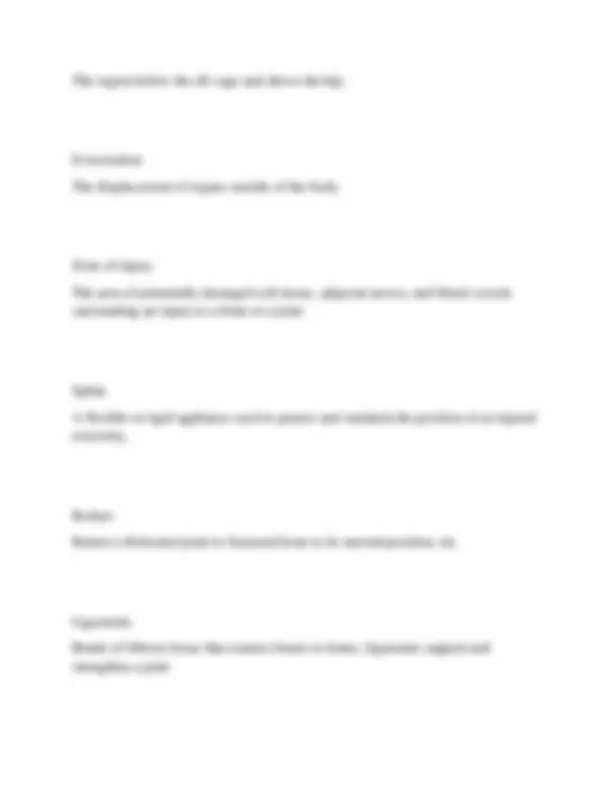
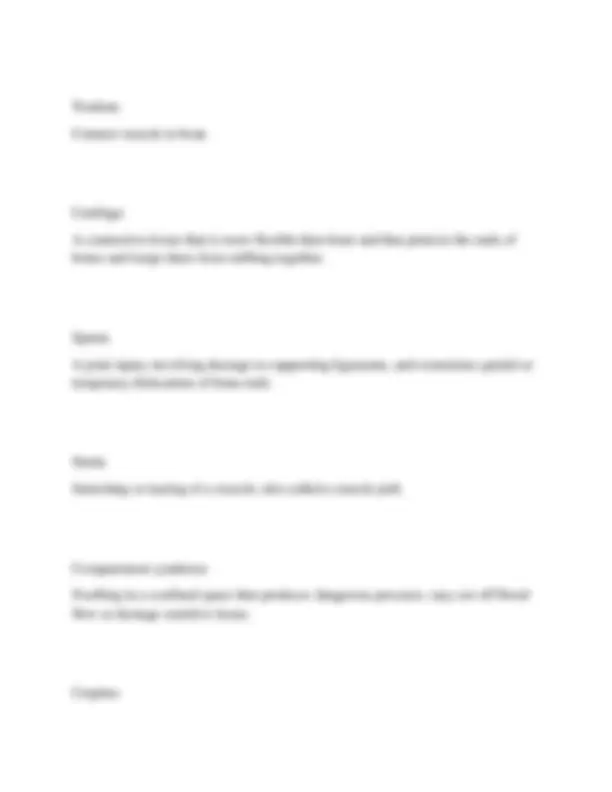
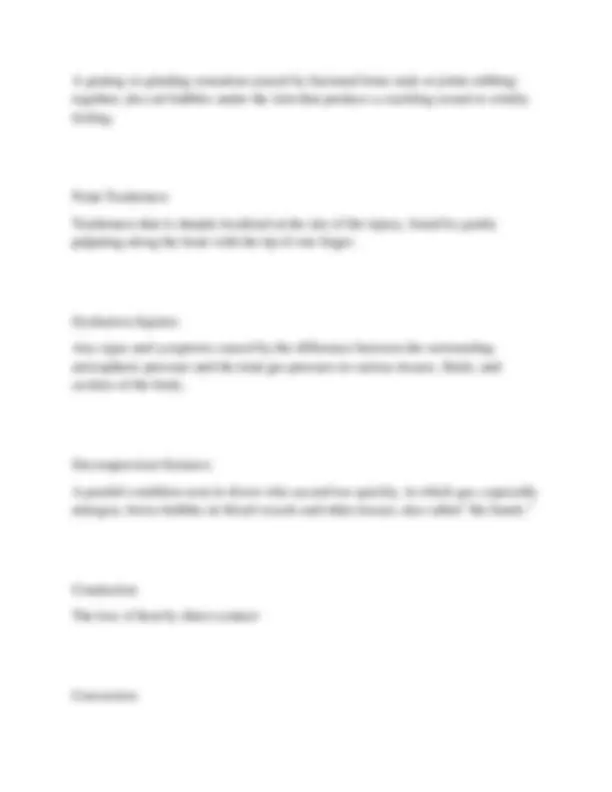
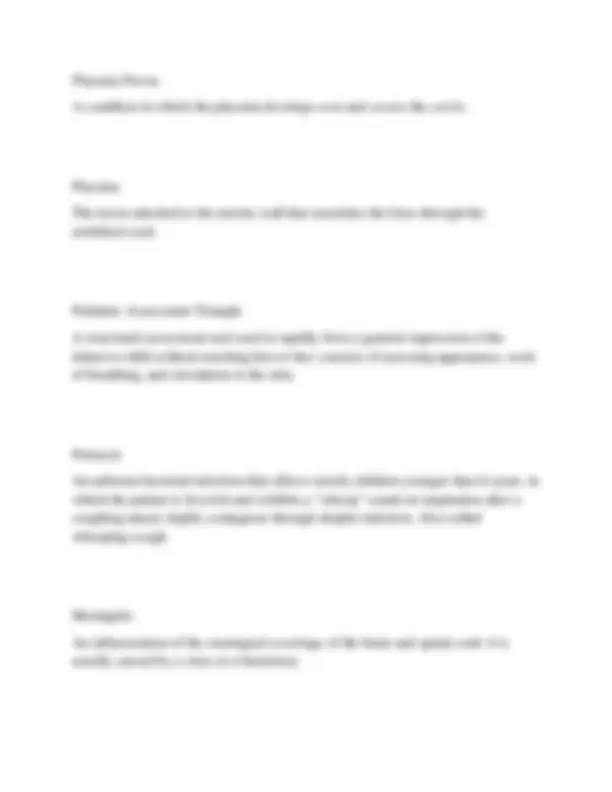
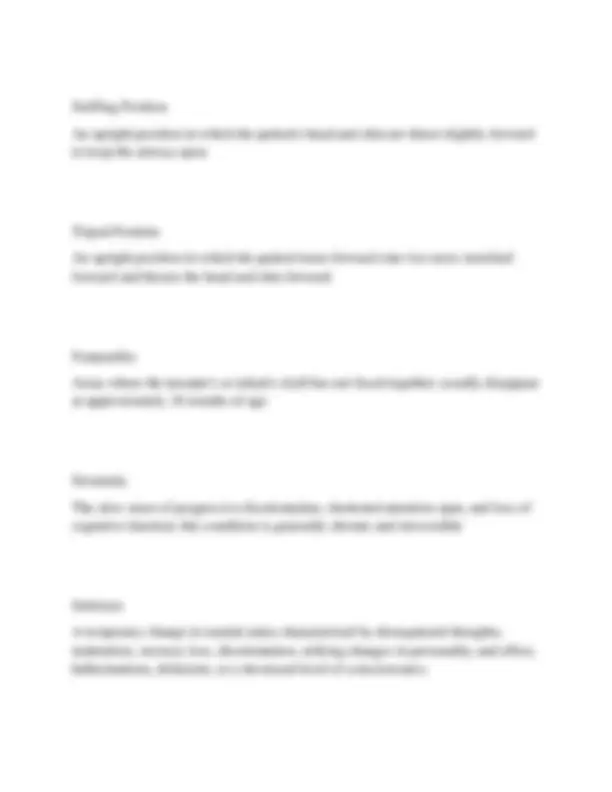
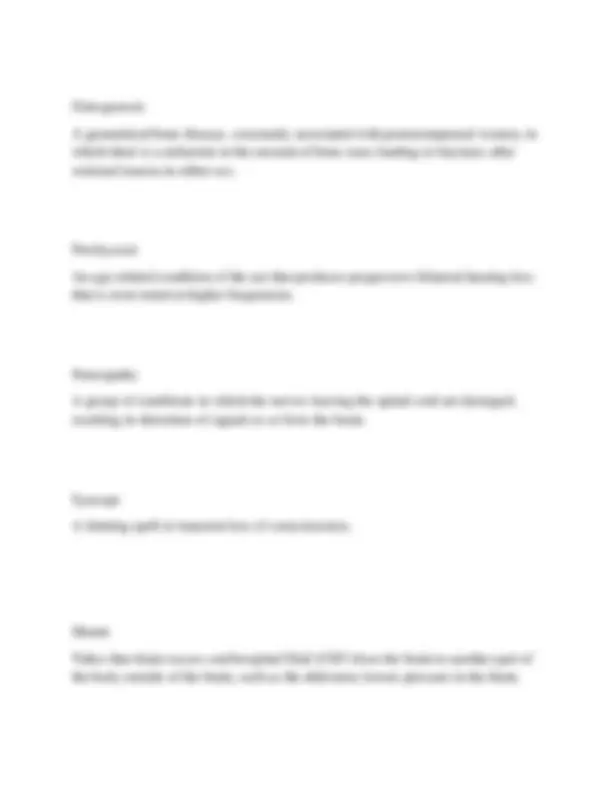
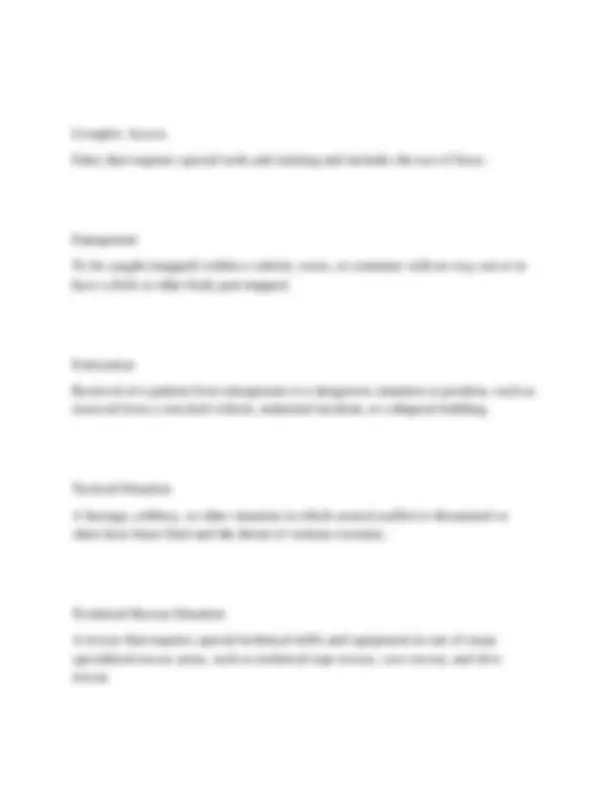
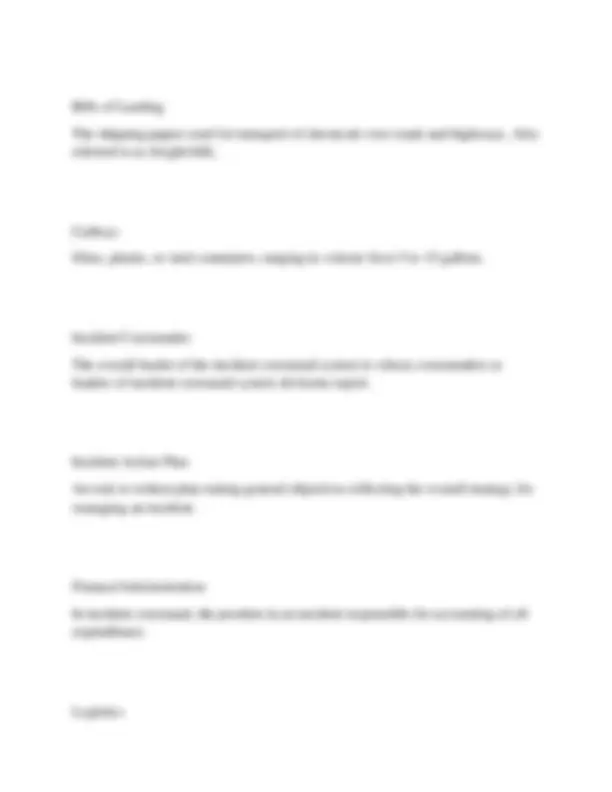
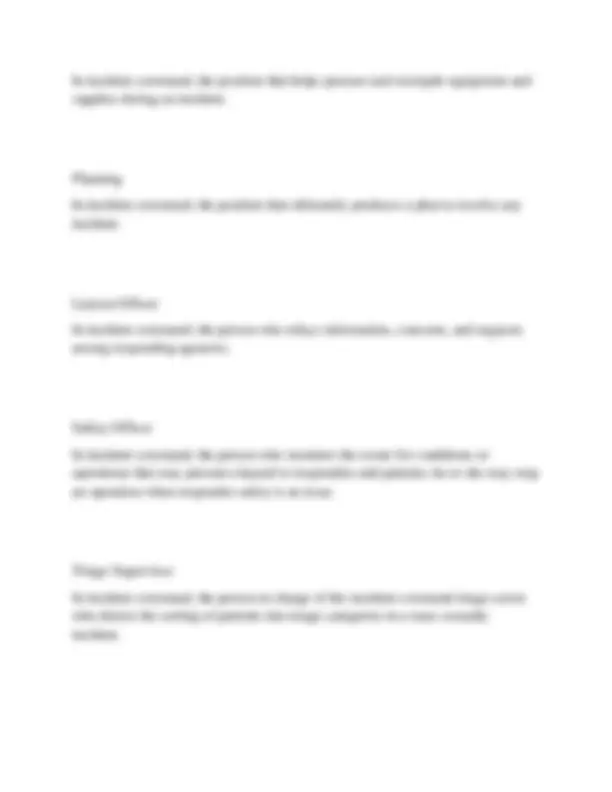


Study with the several resources on Docsity

Earn points by helping other students or get them with a premium plan


Prepare for your exams
Study with the several resources on Docsity

Earn points to download
Earn points by helping other students or get them with a premium plan
Community
Ask the community for help and clear up your study doubts
Discover the best universities in your country according to Docsity users
Free resources
Download our free guides on studying techniques, anxiety management strategies, and thesis advice from Docsity tutors
Anatomy and Terminology D 2025-2026. QUESTIONS WITH CORRECT AND VERIFIED ANSWERS. A+ GRADED. Pneumothorax Accumulation of air in the pleural space Open pneumothorax Sucking chest wound open or penetrating the chest wall Simple Pneumothorax Any pneumothorax that is free from significant physiologic changes and does not cause drastic changes in the vital signs of the patient. Tension Pneumothorax An accumulation of air or gas in the pleural cavity that progressively increases pressure in the chest that interferes with cardiac function with potentially fatal results.
Typology: Exams
1 / 17

This page cannot be seen from the preview
Don't miss anything!










Pneumothorax Accumulation of air in the pleural space
Open pneumothorax Sucking chest wound open or penetrating the chest wall
Simple Pneumothorax Any pneumothorax that is free from significant physiologic changes and does not cause drastic changes in the vital signs of the patient.
Tension Pneumothorax An accumulation of air or gas in the pleural cavity that progressively increases pressure in the chest that interferes with cardiac function with potentially fatal results.
Traumatic Asphyxia A pattern of injuries seen after a severe force is applied to the chest, forcing blood from the great vessels back into the head and neck.
Cardiac Tamponade Compression of the heart as the result of buildup of blood or other fluid in the pericardial sac, leading to decreased cardiac output.
Paradoxical Motion The motion of the portion of the chest wall that is detached in a flail chest; the motion—in during inhalation, out during exhalation—is exactly the opposite of normal chest wall motion during breathing.
Vented Chest Seal An occlusive dressing designed to allow air to escape through the dressing but not be drawn back in
Open Chest Injury An injury to the chest in which the chest wall itself is penetrated by a fractured rib or, more frequently, by an external object such as a bullet or knife.
Melena Black, foul-smelling, tarry stool containing digested blood.
Flank
Tendons Connect muscle to bone
Cartilage A connective tissue that is more flexible than bone and that protects the ends of bones and keeps them from rubbing together.
Sprain A joint injury involving damage to supporting ligaments, and sometimes partial or temporary dislocation of bone ends.
Strain Stretching or tearing of a muscle; also called a muscle pull.
Compartment syndrome Swelling in a confined space that produces dangerous pressure; may cut off blood flow or damage sensitive tissue.
Crepitus
A grating or grinding sensation caused by fractured bone ends or joints rubbing together; also air bubbles under the skin that produce a crackling sound or crinkly feeling.
Point Tenderness Tenderness that is sharply localized at the site of the injury, found by gently palpating along the bone with the tip of one finger.
Dysbarism Injuries Any signs and symptoms caused by the difference between the surrounding atmospheric pressure and the total gas pressure in various tissues, fluids, and cavities of the body.
Decompression Sickness A painful condition seen in divers who ascend too quickly, in which gas, especially nitrogen, forms bubbles in blood vessels and other tissues; also called "the bends."
Conduction The loss of heat by direct contact
Convection
Vernix Caseosa A white, cheesy substance that covers the body of the fetus.
Fundus The dome shaped top of the uterus
Lightening The movement of the fetus down into the pelvis late in pregnancy.
Vertex Presentation A delivery in which the head of the newborn comes out first.
Breech Presentation A delivery in which the buttocks come out first.
Abruptio Placentae Premature separation of the placenta from the uterine wall
Placenta Previa A condition in which the placenta develops over and covers the cervix.
Placenta The tissue attached to the uterine wall that nourishes the fetus through the umbilical cord.
Pediatric Assessment Triangle A structured assessment tool used to rapidly form a general impression of the infant or child without touching him or her; consists of assessing appearance, work of breathing, and circulation to the skin.
Pertussis An airborne bacterial infection that affects mostly children younger than 6 years, in which the patient is feverish and exhibits a "whoop" sound on inspiration after a coughing attack; highly contagious through droplet infection. Also called whooping cough.
Meningitis An inflammation of the meningeal coverings of the brain and spinal cord; it is usually caused by a virus or a bacterium.
Osteoporosis A generalized bone disease, commonly associated with postmenopausal women, in which there is a reduction in the amount of bone mass leading to fractures after minimal trauma in either sex.
Presbycusis An age-related condition of the ear that produces progressive bilateral hearing loss that is most noted at higher frequencies.
Neuropathy A group of conditions in which the nerves leaving the spinal cord are damaged, resulting in distortion of signals to or from the brain.
Syncope A fainting spell or transient loss of consciousness.
Shunts Tubes that drain excess cerebrospinal fluid (CSF) from the brain to another part of the body outside of the brain, such as the abdomen; lowers pressure in the brain.
Illeostomy A surgical procedure to create an opening (stoma) between the small intestine and the surface of the body.
Colostomy A surgical procedure to create an opening (stoma) between the colon and the surface of the body.
Tracheostomy Surgical procedure in which an opening is made in the neck and into the trachea into which a breathing tube may be inserted
Spina Bifida A development defect in which a portion of the spinal cord or meninges may protrude outside of the vertebrae and possibly even outside of the body usually at the lower third of the spine in the lumbar area
Cerebral Palsy A group of disorders characterized by poorly controlled body movement
Complex Access Entry that requires special tools and training and includes the use of force.
Entrapment To be caught (trapped) within a vehicle, room, or container with no way out or to have a limb or other body part trapped.
Extrication Removal of a patient from entrapment or a dangerous situation or position, such as removal from a wrecked vehicle, industrial incident, or collapsed building.
Tactical Situation A hostage, robbery, or other situation in which armed conflict is threatened or shots have been fired and the threat of violence remains.
Technical Rescue Situation A rescue that requires special technical skills and equipment in one of many specialized rescue areas, such as technical rope rescue, cave rescue, and dive rescue.
Bills of Landing The shipping papers used for transport of chemicals over roads and highways. Also referred to as freight bills.
Carboys Glass, plastic, or steel containers, ranging in volume from 5 to 15 gallons.
Incident Commander The overall leader of the incident command system to whom commanders or leaders of incident command system divisions report.
Incident Action Plan An oral or written plan stating general objectives reflecting the overall strategy for managing an incident.
Finance/Administration In incident command, the position in an incident responsible for accounting of all expenditures.
Logistics
Transportation Supervisor In incident command, the person in charge of the transportation sector in a mass- casualty incident who assigns patients from the treatment area to awaiting ambulances in the transportation area.
Material Safety Data Sheet A form, provided by manufacturers and compounders (blenders) of chemicals, containing information about chemical composition, physical and chemical properties, health and safety hazards, emergency response, and waste disposal of a specific material; also known as a safety data sheet (SDS).
Secondary Containment An engineered method to control spilled or released product if the main containment vessel fails.
Placards Signage required to be placed on all four sides of highway transport vehicles, railroad tank cars, and other forms of hazardous materials transportation; the sign identifies the hazardous contents of the vehicle, using a standardization system with 10¾-inch diamond-shaped indicators.
Mass Casualty Incident An emergency situation involving three or more patients or that can place great demand on the equipment or personnel of the EMS system or has the potential to produce multiple casualties.
Public Information Officer
In incident command, the person who keeps the public informed and relates any information to the media.
START Triage A patient sorting process that stands for Simple Triage And Rapid Treatment and uses a limited assessment of the patient's ability to walk, respiratory status, hemodynamic status, and neurologic status.